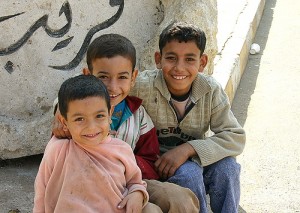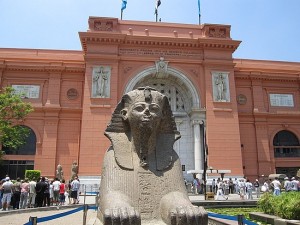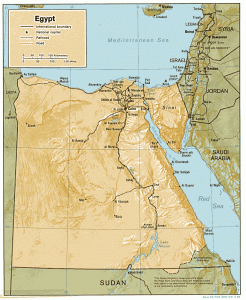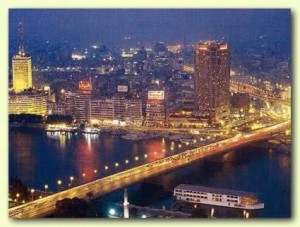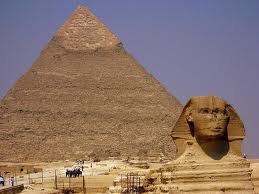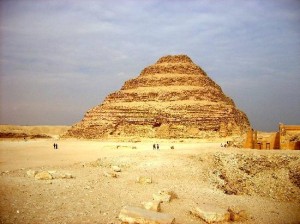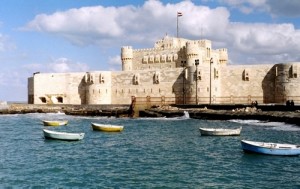This article is written by Meenakshi Bhalla, a Businesswoman and a travel writer, based in Mumbai, India
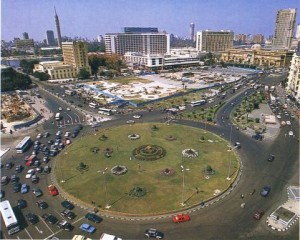 I remember the great excitement when I landed in Cairo the first time. Foreign land, in an unfamiliar airport, yet bubbling with unbridled excitement knowing I was in the land of the most ancient civilization ready to discover history for the first time in my life (despite having a double passport book)!
I remember the great excitement when I landed in Cairo the first time. Foreign land, in an unfamiliar airport, yet bubbling with unbridled excitement knowing I was in the land of the most ancient civilization ready to discover history for the first time in my life (despite having a double passport book)!
The airport was not glitzy but my God the city certainly looked snazzy! Flyovers crisscrossing zanily a la New Yorkesque, people buzzing busily on the streets, traffic zooming in all directions and the ride to the hotel saw me absorb all the sights and sounds in gulps!
Egyptians pay a lot of attention to traffic laws…and I understand why, better now- because of the much dreaded police (worst symbol of the tyranny of the Regime) who are autocratic, wilful and powerful.
Cabbies crazily and stubbornly don’t move their hands off the horns, as they weave in & out of traffic. The people who ride in public buses instinctively know when to jump out of harm’s way and onto the streets. The buses always overloaded with people, with barely any standing room, sway from side to side making their way on a busy road. I felt completely at home. These scenes are just the same in India:) Egypt to this extent was not another world…but sure, another culture with codes of their own which one definitely respected.
Culturally, Egypt is a Muslim country. Even in the big cities (Cairo, Giza, Luxor, Alexandria) a woman should have a male companion with her when on the street. Ladies should have shoulders and upper arms covered, closed neck top, skirt below the knees, pants are ok, but ought to be loose. Modesty is the key word. I respected their culture and adhered to the codes.
As hot as Egypt is, the warmest things I saw were the smiles of the children – sometimes I so wish for a world made of only children. We would have no corruption nor politics.
Love crosses cultural lines! Talking to Egyptians in a universal language (signs and symbols) was a wonderful experience. Walking through shopping streets I observed them as warm, loving parents with their children in the parks and malls. Speaking with foreigners I saw them flirt, guide, direct and converse intelligently. Cultural differences indeed vanish when people care! A positive environment is all that is needed.
 The Nile River was just across the street from us, we took a cruise on the Nile. It is much larger than I had ever imagined. We met many young people who were out on a date, or accompanying their college/school for a picnic. Singing popular Egyptian songs set to rhythmic foot tapping beats ( a la Bollywood). As modern Egyptians lived their lives in a busy bustle, I also saw many people still living as they did many years ago. Fishing on the Nile for a livelihood (a la Kerala), washing off stream (a la Varanasi). Images of diverse India would flash past the mind, so often.
The Nile River was just across the street from us, we took a cruise on the Nile. It is much larger than I had ever imagined. We met many young people who were out on a date, or accompanying their college/school for a picnic. Singing popular Egyptian songs set to rhythmic foot tapping beats ( a la Bollywood). As modern Egyptians lived their lives in a busy bustle, I also saw many people still living as they did many years ago. Fishing on the Nile for a livelihood (a la Kerala), washing off stream (a la Varanasi). Images of diverse India would flash past the mind, so often.
Did you know Egyptian influence is huge on French cuisine? Yep! An important influence of Egyptian cooking is the use of wine to soften meats and also to change the feel of vegetables. Many people think that it is part of French cuisine but actually wine has been in use by Egyptians in their cooking for many centuries. Bamya is a dish consisting of okra and meat which is made into stew. Though this is unique to the Egyptians, one can find this in French cuisine too. And omg the sweets/mithais of Egypt are to die for, those who have not read my older post < I have dedicated a post exclusively to Egyptian sweets.
The Cairo Museum: my first impressions of the beautiful landscaped gardens, an oasis of peace. And on the inside I do remember the mummies amongst a lot of other ancient treasures. Rooms full of mummies. And believe me, once you have seen one mummy, they all look alike:) But yesterday when I saw the museum on fire, my blood curdled and I wanted to shout and scream and run to save the museum! I felt sad for why would these pro- Mubarak protesters want to damage their own treasures? They have treasures that we don’t have. Their history goes back into the sands of time…the times of the Pharaohs, the times of the ruling Queens, the time of Moses, the time when Joseph & Mary fled with young Jesus…Why would they want to destroy something that is their own? Do they even understand and respect their history?:(
Its surreal to see the unrest in Egypt. While I know and understand that the present day inhabitants of Egypt are not the indigenous people, I still feel a kindred spirit and very at home in Egypt. Many even thought I belonged to Egypt and spoke to me in Arabic! Regardless, whether they knew I was an Indian or a tourist I could see they generally wanted me to enjoy my stay in their country.
Fast forward to the unrest I see on TV, sure we are seeing one of the rarest of things — a moment when the people lose their fear of the State, when, as the Chinese say, “the mandate of heaven has fallen” and it is only a matter of time before the old regime must yield. Revolutions are great fun during their early days. (Despite the violence, there is an extraordinary exhilaration to them) Then food runs short, there is disorder, travel is disrupted, the economy grinds to a halt, and there is a longing for a return to a sense of order.
It is one thing for the people of a country to reject a leader. It is another thing entirely for a foreign nation to invade, particularly under false pretenses. The USA has been meddling in Egyptian business by supporting Mubarak for 30+years. Suddenly pushing him to acknowledge the will of his people is meddling? To be honest, I think that Egyptians probably understand more about freedom and democracy than Americans do, since it has been Egyptians who have been suffering under a dictatorship and right now it is Egyptians who are fighting and dying in the streets for their freedom.
It blows my mind that USA gets away by saying Egyptians only know Sharia Law and Theocracy. Umm, no, Egypt has been under a secular dictatorship. They know nothing except US-backed secular tyranny. Still, the fact that they are fighting valiantly for freedom and democracy gives me hope that they will indeed get their freedom and will cherish it. They will come to value it more than most Americans, I’m guessing.
Unlike other nations in the region, Egyptians are not aggressive; Cairo’s foreign policy itself is built on the very fact that its diplomats are often at the forefront of goodwill missions, engaged in peace conferences or acting as mediators in long-standing conflicts.
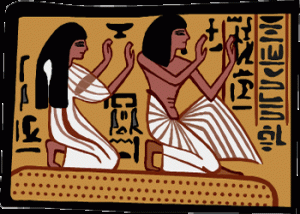 And finally on a very personal note: When I came back home to India I saw a sign that captured the source of my “energy” during my Egyptian adventure. The sign said, “What you are is God’s gift to you. What you do with your life is your gift to God!” For me, Egypt was an environment for imbibing, learning, discovering. I am immensely proud of that. Cross cultures do touch lives in amazing, positive ways! I hope and pray for peace to once again bring sunshine to the Egyptian lives soon.
And finally on a very personal note: When I came back home to India I saw a sign that captured the source of my “energy” during my Egyptian adventure. The sign said, “What you are is God’s gift to you. What you do with your life is your gift to God!” For me, Egypt was an environment for imbibing, learning, discovering. I am immensely proud of that. Cross cultures do touch lives in amazing, positive ways! I hope and pray for peace to once again bring sunshine to the Egyptian lives soon.
Meenakshi Bhalla
2011
http://meetravels.blogspot.com/search?updated-max=2011-03-08T23%3A29%3A00-08%3A00&max-results=10
